Wedding Gown Tips: Finding Your Perfect Fit
Searching for your dream wedding gown can be one of the most thrilling parts of planning your big day. It’s a special moment where you get to imagine what you’ll look like when you walk down the aisle. With so many styles and options available, it might feel overwhelming at first, but that’s part of the adventure.
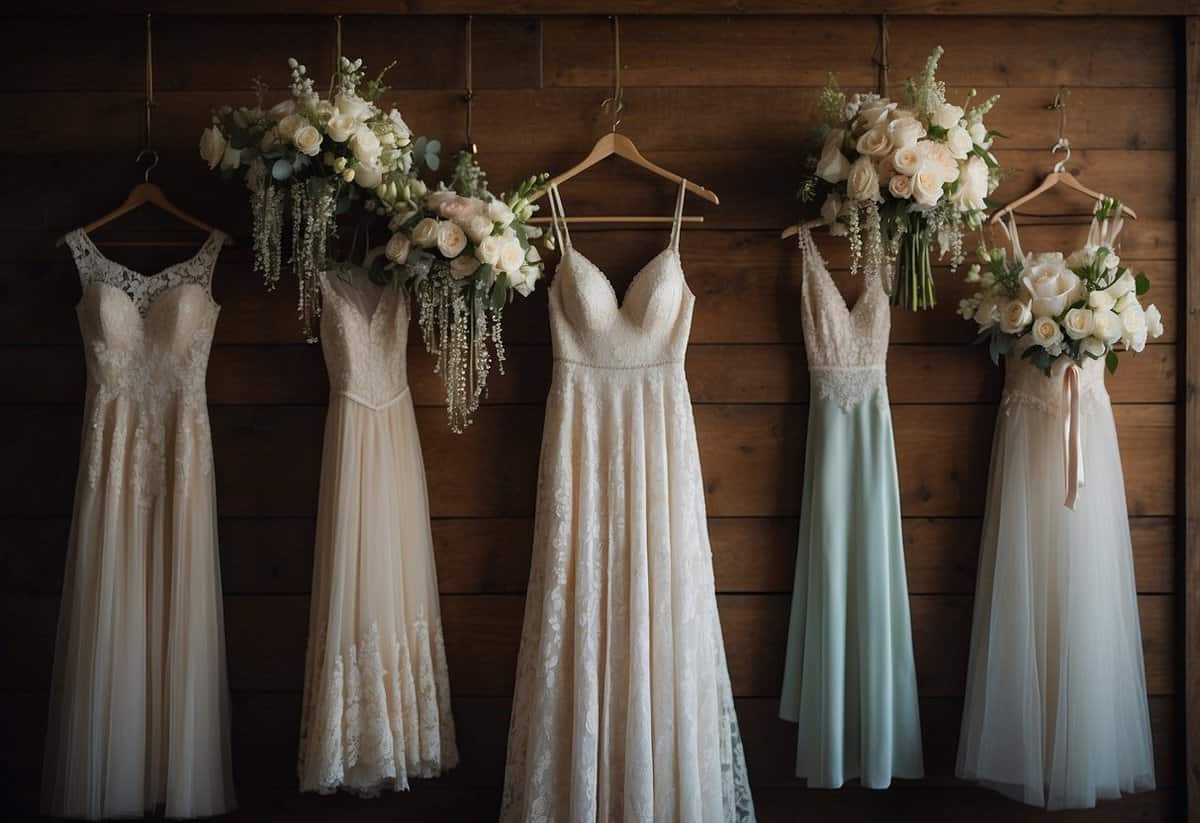
The goal is to find a dress that makes you feel beautiful and confident. Whether you have a clear idea of what you want or you’re open to exploring different styles, knowing a few key tips can make the experience more enjoyable. This guide aims to help you navigate the process with ease, turning what could be a stressful task into a cherished memory.
1) Choose a gown that fits your wedding theme
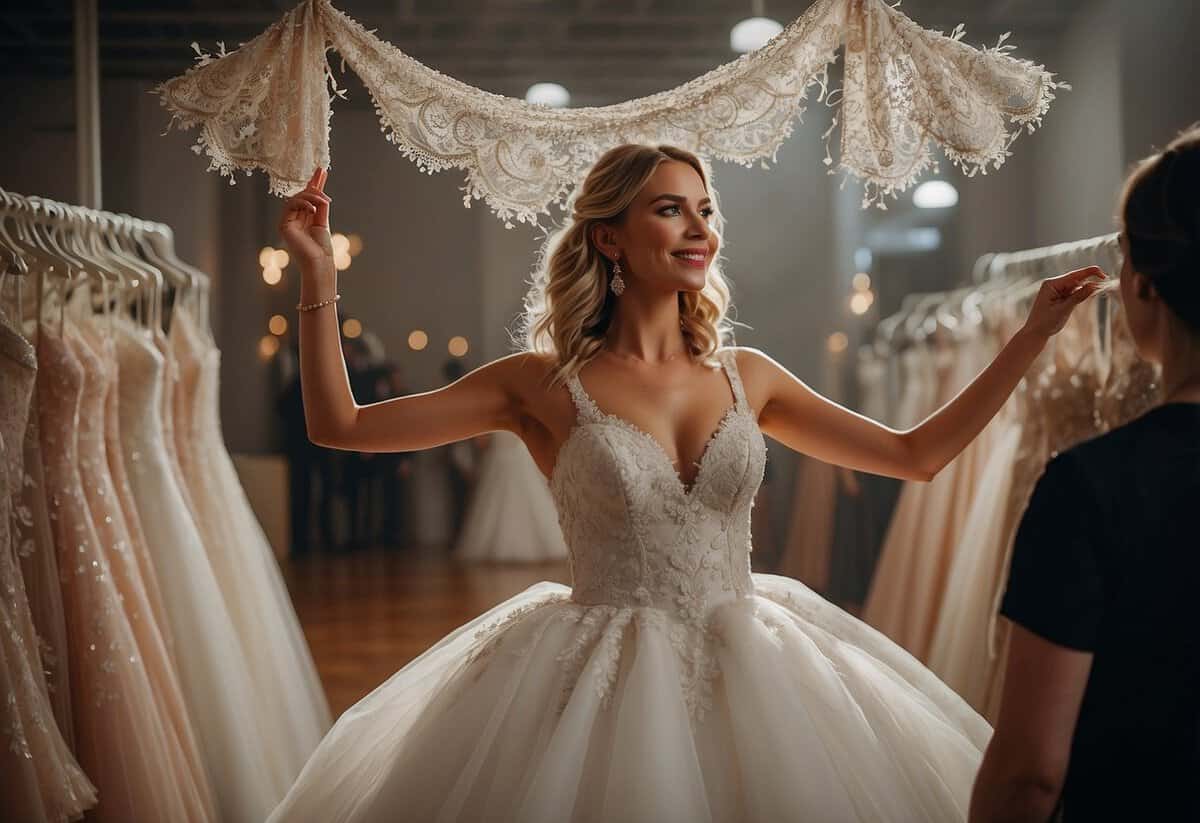
When picking a wedding dress, it’s important to consider the overall theme of your wedding. Whether you’re planning a casual garden party or a formal ballroom affair, your gown should match the setting and mood.
Think about your venue. A beach wedding might call for a light, flowing dress, while a grand cathedral would suit a more elegant, traditional gown.
Your wedding theme should guide your choice. For a vintage-inspired wedding, look for dresses with lace or antique details. For a modern wedding, sleek and minimalist designs work well.
By aligning your gown with your theme, you create a harmonious look that ties everything together.
2) Consider the venue when selecting your dress
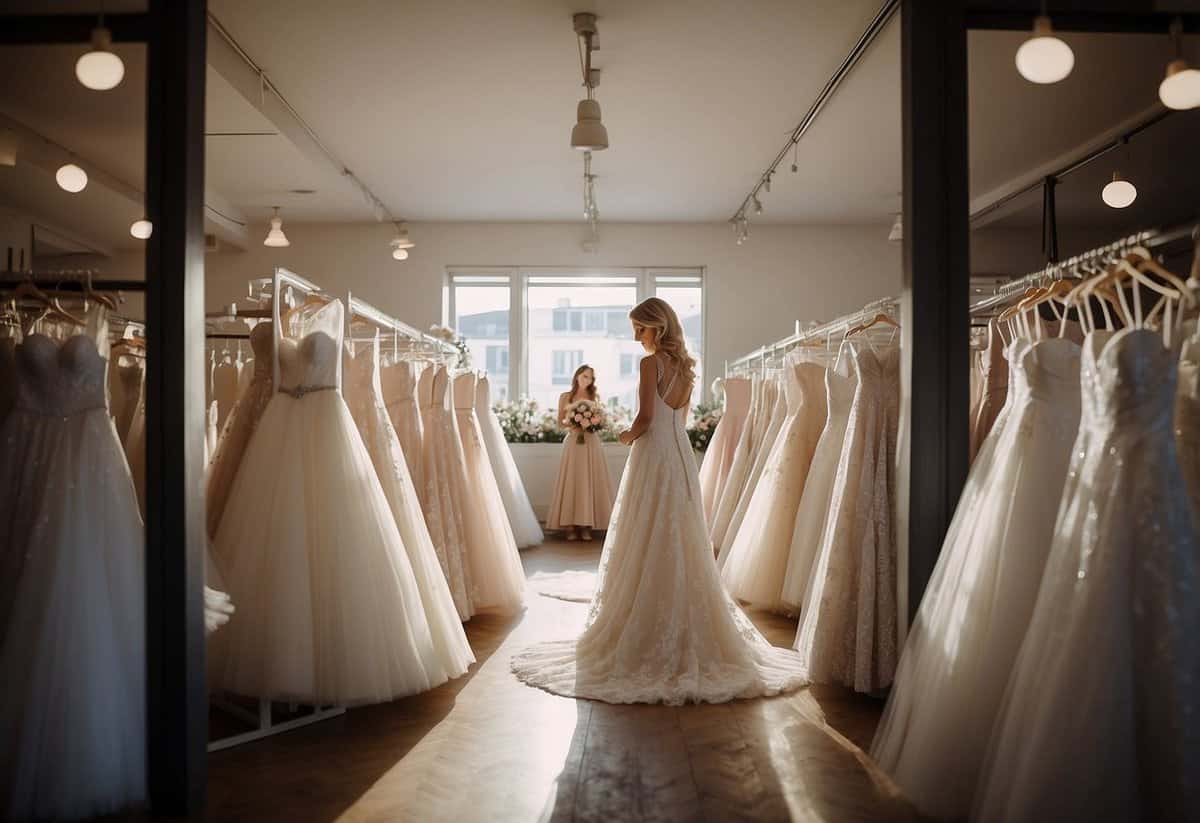
The location of your wedding plays a big role in what dress you should choose. For a beach wedding, lightweight fabrics like chiffon or organza are ideal. These materials are breathable and comfortable for warm weather.
If your wedding is in a formal venue, a more elaborate gown with lace or beading might suit the setting. Indoor venues can accommodate heavier fabrics and longer trains.
Garden weddings often have a whimsical, natural theme. A boho dress with floral details can complement the surroundings. Think about practical aspects too. If the ground is uneven, avoid really long trains to make it easier to walk.
An important tip is to think about the season. A winter wedding may call for dresses with long sleeves or added layers. This way, you stay comfortable and stylish regardless of the weather.
3) Don’t Forget About Comfort for Long Hours
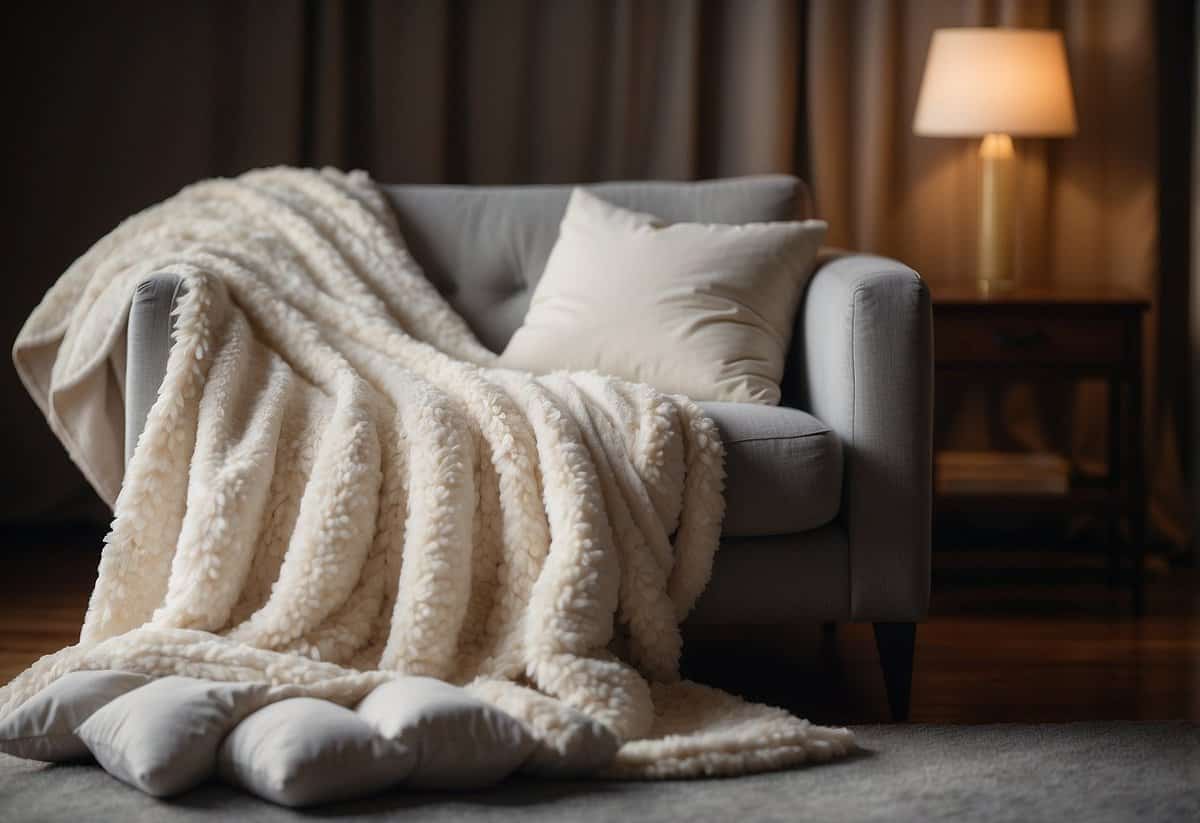
Comfort is key when choosing your wedding gown. You will be wearing it for hours, so it’s important to feel good in it. A gown that’s too tight can make it hard to sit, dance, or even breathe.
Make sure the fit allows you to move easily. You’ll want to enjoy your big day without any discomfort. Try sitting, dancing, and walking around in the gown during fittings.
Think about the fabric too. Fabrics like satin or silk can become too warm, especially in crowded rooms. Lighter fabrics can help keep you cool and comfortable.
Consider how elements like heavy beading or long trains might affect your comfort. The right accessories and undergarments can also make a huge difference in how comfortable you feel.
Choose shoes that you can stand in for hours. Bring a backup pair of flats for dancing and mingling later.
4) Explore Various Fabric Options

Choosing the right fabric for your wedding gown is important. Each fabric has its own look and feel, so you should consider what works best for your style and comfort.
Silk is a luxurious choice often used for wedding dresses. It’s known for its strength and sheen. There are different types of silk, like silk satin and silk Mikado.
Chiffon is another popular option. This lightweight fabric is great for a flowing, romantic look. It’s perfect for whimsical and airy designs.
Crepe is a versatile fabric that drapes beautifully. It’s excellent for minimalist and modern gowns, giving a sleek and elegant silhouette.
Satin has a lovely sheen and heavy drape, making it a timeless choice for brides. It gives your dress a classic and glamorous feel.
Don’t forget to consider fabrics like tulle, lace, and organza. Each offers a unique texture and style for your special day.
5) Schedule Multiple Fittings Before the Big Day
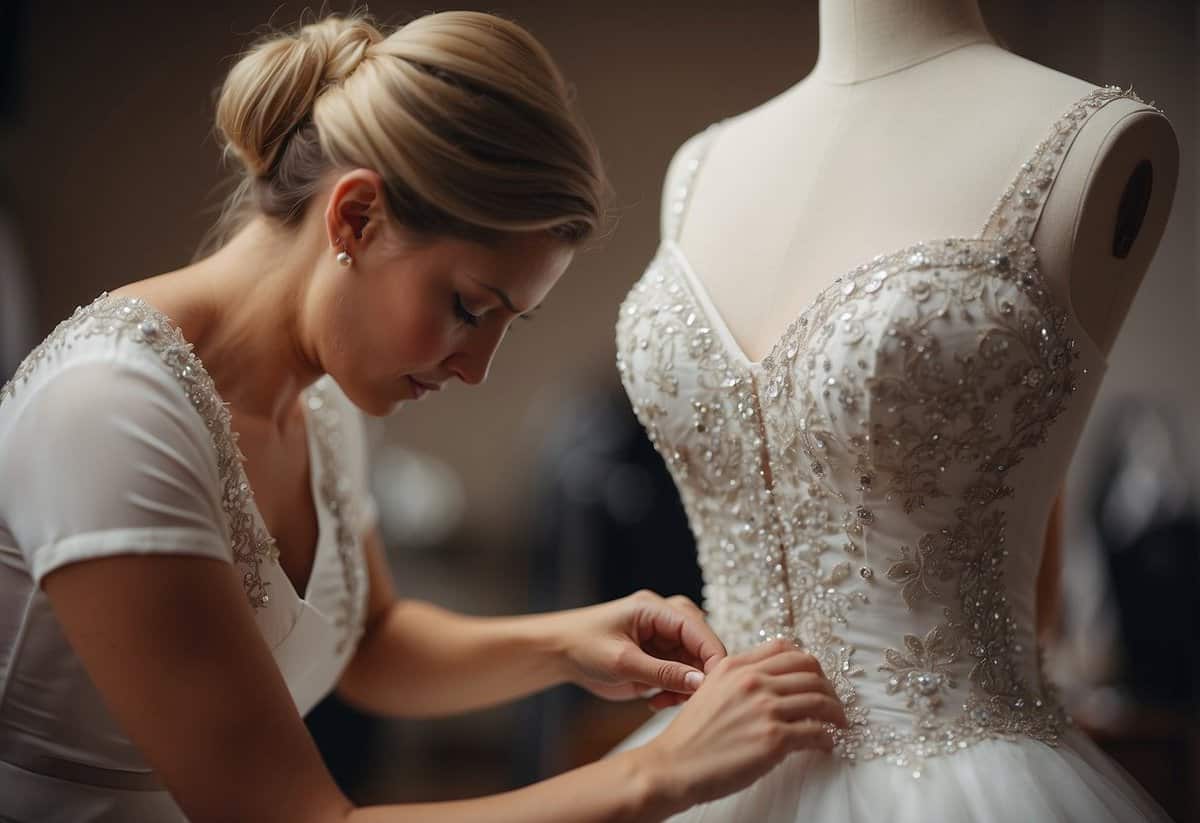
It’s important to schedule multiple fittings for your wedding dress. Your first fitting should be about 6 to 8 weeks before the wedding. This gives you enough time to make any needed changes.
At the first fitting, bring your wedding shoes and any undergarments you plan to wear. This ensures the length and fit are perfect.
Plan your second fitting about one month before the wedding. By then, adjustments from the first fitting should be complete. You’ll want to make sure everything fits just right.
A final fitting a week or two before the big day is often a good idea. This lets you make any last-minute tweaks.
By scheduling multiple fittings, you’ll ensure your dress fits beautifully on your special day. It’s a small step that can make a big difference in how you look and feel.
6) Research different dress silhouettes
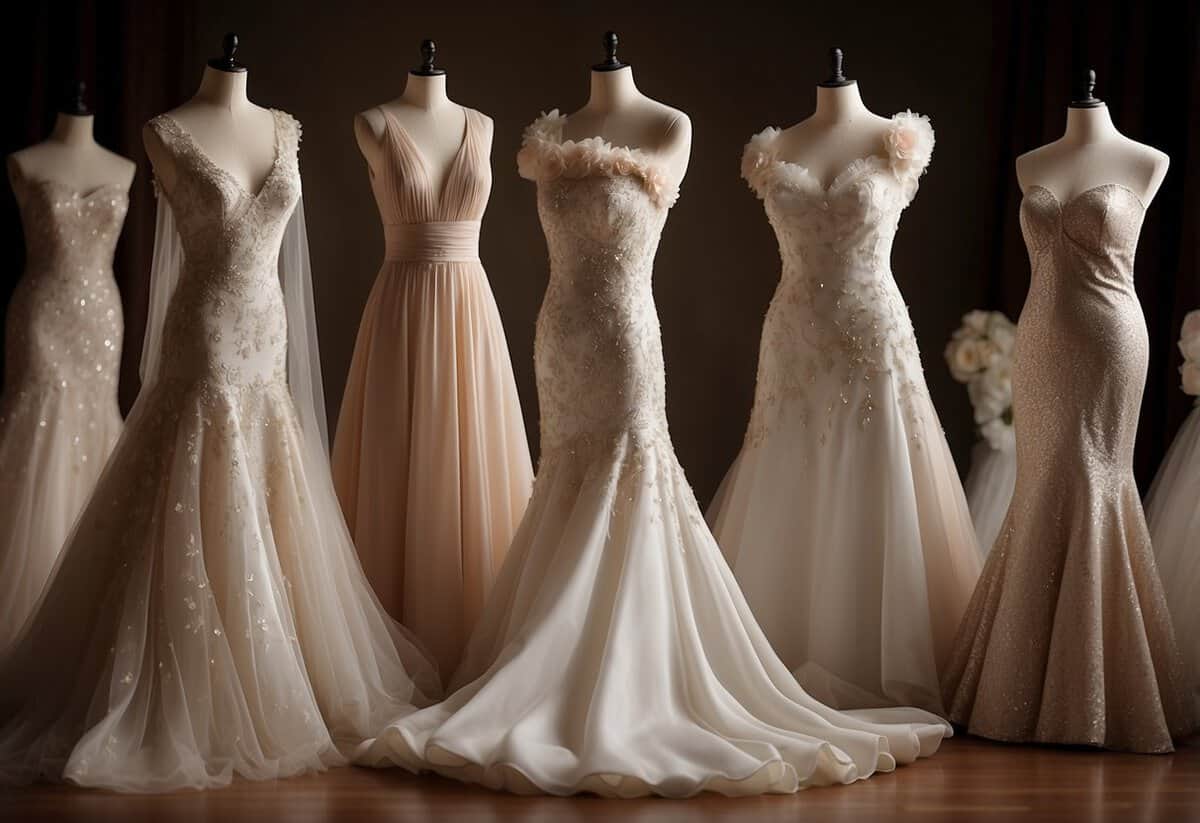
Exploring different dress silhouettes is key to finding the perfect wedding gown. Each silhouette offers a unique look and feel, catering to various body types and personal styles.
A ball gown has a fitted bodice and a full skirt, giving a princess-like appearance. It’s suitable for large, formal weddings.
The mermaid dress showcases curves with a fitted design that flares out at the knees. It’s a great choice for brides who want a glamorous, figure-hugging look.
An A-line dress has a fitted bodice that gradually expands out, resembling the shape of the letter “A.” This style flatters most body types and is versatile for many wedding settings.
Consider the trumpet silhouette, which is like the mermaid but flares out mid-thigh. This style is perfect for those who desire a balance between fitted and flowy.
Lastly, the sheath dress is simple and elegant, with a straight cut that flows from the top to the bottom. Ideal for minimalist brides, it’s perfect for beach or outdoor weddings.
Understanding these silhouettes can help you make an informed decision and choose the dress that makes you feel amazing.
7) Incorporate personal touches and accessories
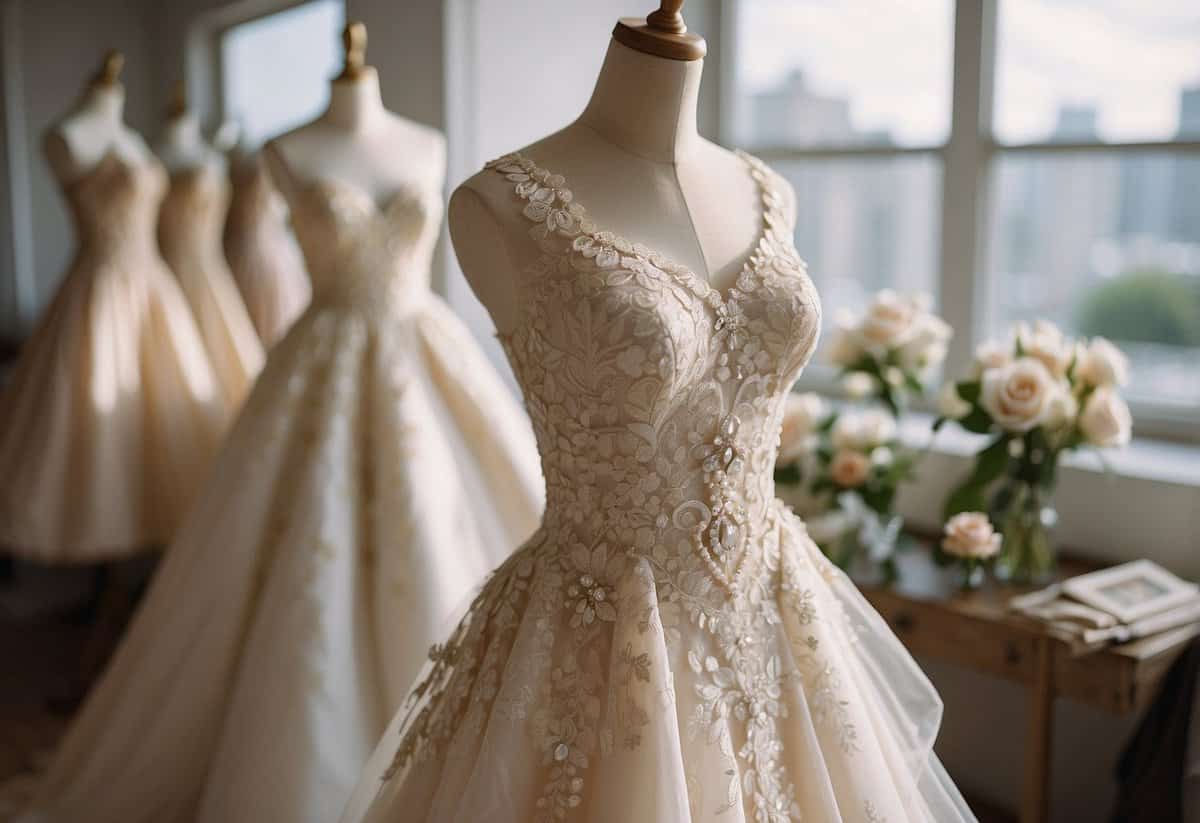
Adding personal touches and accessories to your wedding gown makes your look unique. Include heirlooms like your mother’s or grandmother’s jewelry. If you have an old dress that’s too fragile to wear, consider using a piece of its fabric for a handkerchief or bouquet wrap.
Think about your own style when choosing accessories. Maybe you like vintage brooches or modern hairpins. You can also add a pop of color with shoes or a sash.
Consider customizing your veil or adding a personal message embroidered inside your gown. These small details can make a big difference and add sentimental value to your outfit.
8) Think about seasonal appropriateness
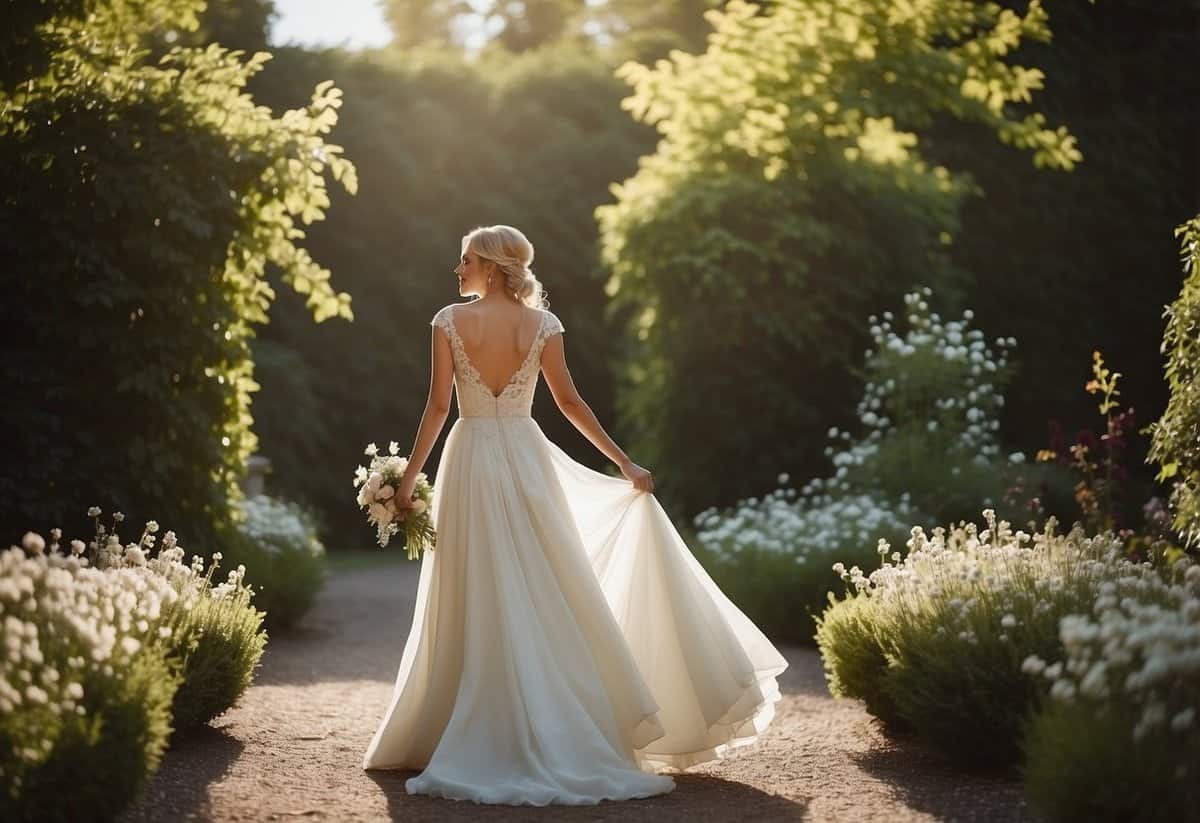
Choosing a wedding gown means considering the season of your big day. For a summer wedding, think lightweight fabrics like chiffon or silk. These materials keep you cool and comfortable.
Fall and winter weddings call for cozier options. You could add a fur or faux fur shawl to stay warm. A dress with detachable sleeves or a heavier fabric like velvet might also work.
Spring weddings bring blooming flowers and mild temperatures. Opt for flowy dresses in pastel colors or floral prints. Men can match the season by choosing lighter-colored suits.
Choosing shoes is also important. Open-toed sandals are great for summer, while strappy wedges are ideal for an outdoor event. For cooler seasons, closed-toe shoes or elegant boots are wonderful choices.
9) Budget for the gown and alterations
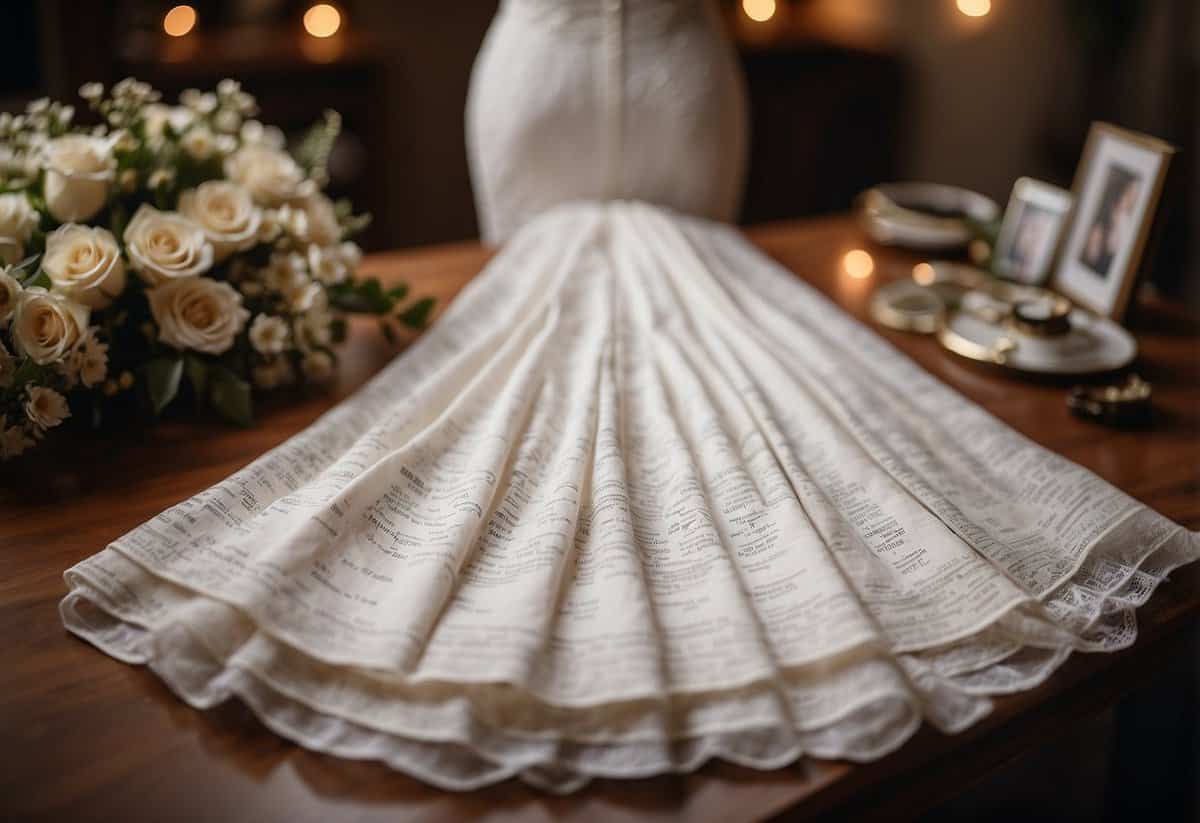
When budgeting for your wedding gown, remember that alterations are usually necessary.
Alterations can range from $150 to $800. These costs depend on the complexity, fabric, and details like lace or beading.
Set aside a portion of your dress budget for alterations to avoid surprises.
Plan for around three fittings to ensure the perfect fit.
Thinking ahead can help make the process smoother and stress-free.
10) Seek recommendations from friends and family
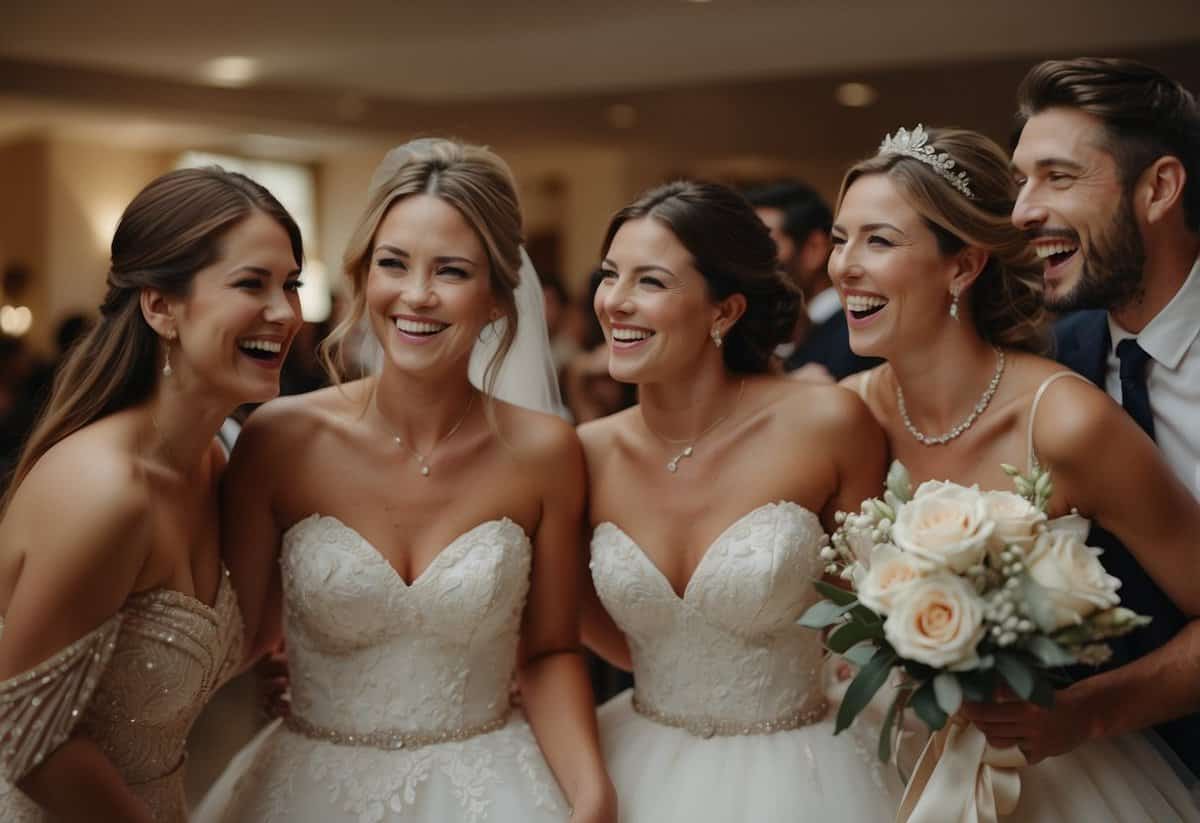
Ask your friends and family for wedding gown shop recommendations. They might know great stores or boutiques you wouldn’t find on your own.
Hearing about their experiences can help you choose places with good service and a wide selection.
Remember to ask what they liked and disliked about their shopping experiences. This way, you can avoid any potential issues and have a smoother time finding your dress.
Choosing the Right Fabric

Selecting the perfect fabric for your wedding gown is crucial. This choice affects how the dress feels, looks, and moves. It’s essential to consider the fabric type and the season of your wedding.
Understanding Fabric Types
Different fabrics give wedding dresses unique qualities. Satin is known for its smooth, shiny surface and luxurious feel. It’s perfect if you want a classic, elegant look. Silk fabrics, like Mikado and Gazar, are strong and resilient, offering a rich texture and often a bit more structure.
Chiffon is light and airy, giving a softer appearance. It’s ideal for a flowy, romantic gown. Organza is similar but stiffer, providing volume without the weight. Tulle is another light option, often used for skirts and veils, creating a dreamy, fairy-tale feel.
Seasonal Considerations
Choosing the right fabric also depends on the time of year. For summer weddings, chiffon and organza are great choices due to their light and breathable nature. They help keep you cool and comfortable. Tulle is also suitable, especially if you want layers without the heaviness.
For cooler weather, satin and silk fabrics like Mikado and Dupioni are better. They offer warmth and structure, making you feel cozy while looking glamorous. Velvet is another luxurious option for winter, adding a touch of dramatic elegance to your gown.
It’s important to balance comfort and style, keeping in mind how the fabric will feel throughout your special day.
Finding the Perfect Fit
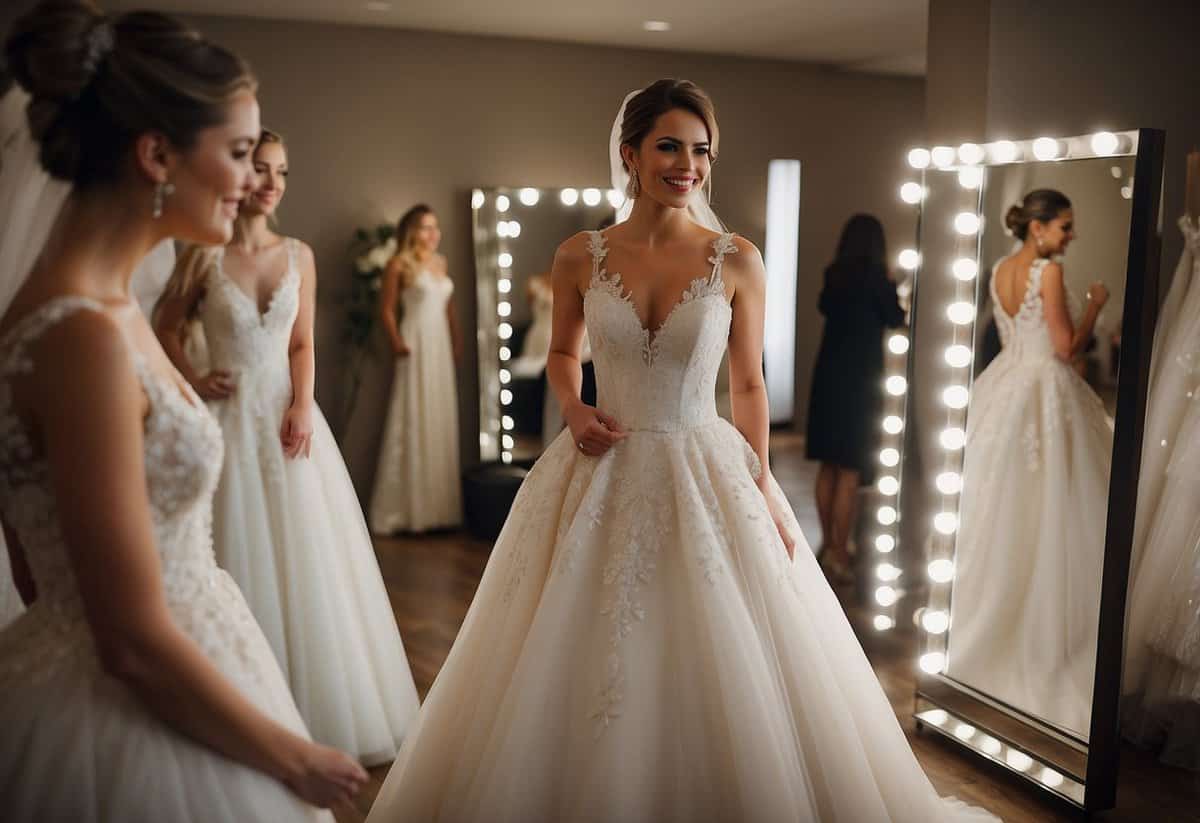
Choosing the right wedding gown is all about finding the perfect fit for your body. Knowing your body shape and deciding between custom or off-the-rack gowns can help you make an informed choice.
Body Shape and Silhouette
Your body shape plays a big role in choosing the best gown. If you have an hourglass shape, a mermaid or trumpet gown will highlight your curves. A-line gowns are great for pear-shaped bodies because they balance the hips and bust.
For brides with a rectangular shape, an empire waist can create the illusion of curves. V-necklines work well for heart-shaped bodies as they draw attention to the upper body.
Try on different styles to see what feels best. Sometimes, what you think won’t suit you might surprise you. Always consider comfort, too—you’ll be wearing this gown for hours!
Custom vs. Off-the-Rack
When deciding between custom and off-the-rack gowns, think about your budget and time. Custom gowns are tailored to your exact measurements, offering a perfect fit and unique style. This option is usually more expensive and requires at least six months to create.
Off-the-rack gowns are ready-made and can be a quicker and more affordable choice. You can try them on and see how they look right away. Alterations can tailor them to fit your body, making them feel bespoke.
Remember to bring the right undergarments and shoes to fittings to get an accurate idea of the final look. Don’t shy away from asking for adjustments until the gown feels just right.








